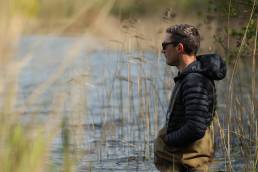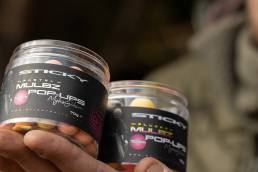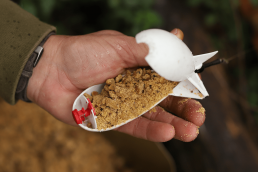
Fishing close to snags can be very rewarding, but you have to do it right in order to get the best result, Jim Wilson details how…
Fishing close to snags can be very rewarding, but you have to do it right in order to get the best result, Jim Wilson details how…
Imagine the scenario; your local village or town is the lake you are targeting, where do people spend most of their time? Well, unless they live the life of riley, they probably spend a lot of their time at home! The question is, if the lake you are targeting can be a theoretical town or village, where is the carp’s home?
Most lakes will have some sort of snag present, be that over hanging trees or bushes, dead felled trees, or even root networks underwater. These areas are the carp’s home! Rather than swimming out in the open 24/7, they would much rather spend several hours a day sat in some cover. Not only do they provide a safe haven for them, but the overhangs and branches tend to shade these areas too, helping the fish cool down in the summer, and provide a bit of insulation in the winter.
It might be super tempting to fish very close to the snags, maybe even within them, but this should be totally avoided. Not only do you put the fish themselves in danger, but you also could actually reduce your chances of catching. What I have often found is that carp treat snags as a rest up area, and only graze lightly on food, if at all while they are in there. It is therefore far better to intercept them on a spot just off the snag, which is close enough for them to feel safe but far enough away for you to cause no harm to the fish.
To make things easy, I have broken down some snag fishing tips into easy-to-understand sections, enabling you to get the best out of this method.
CHECK AND CHECK AGAIN!
CHECK AND CHECK AGAIN!
When you are choosing a snag to fish next to, you should always find a suitable spot just like you would in open water. I would use a very small lead and plop it around the general area until you come across a nice clean spot for a rig. It’s important to check the surrounding area of your spot too, as the nature of spots close to snags can be hazardous. Fallen branches being the main one to look out for, but really anything could be down there, and it’s best to find it before you hook a fish!

It also pays to have a look in the snag you are fishing towards. Check if there’s any roots piling into the water or other nasty branches or dead trees. If it’s relatively free of this type of debris, then you can calm down a bit when you eventually hook one. However, if it’s akin to the mangroves of the Amazon, you best be ready to hold on! Whatever way, it is always best to be prepared beforehand.
BEEF IT UP
BEEF IT UP
Even if you are fishing incredibly safely, well away from any canopies, those fish know exactly where they are! It is therefore worth stepping up your gear when fishing to snags to give you extra strength to pull them away, or if they do find the sanctuary of the snag, give you the best chance of getting them out!

A solid main line is where it starts for me, and where allowed, braid is a huge advantage. The lack of stretch really does ensure the fish can’t reach the snag, even if you are fishing on the edge of it. Where braid isn’t allowed, 20lb mono is all I would ever use, as with the nature of margin fishing you aren’t fishing far out, so strength is definitely the over weighing factor.
Moving down, I use a strong leader material, normally the lead-free woven ones. These give you the best abrasion resistance possible, so if the unfortunate thing does happen and a fish does get snagged, you should still be able to get it out. The same goes for the rig, there’s no need for delicacy there either; a big hook and strong hooklength is paramount!
DROP THE LEAD
DROP THE LEAD
Fishing with a drop off lead seems to be all the rage these days, but for me, it is of absolute importance when fishing close to snags. Leads are big and heavy, they hang low and can become a hazard in a snag. Therefore, just to be completely safe, I fish with a drop off system. You can use whatever system takes your fancy, but always test it yourself to make sure it works before casting out.


LAY OF THE LAND
LAY OF THE LAND
Once you have found your spot and cast out, it is very important to set your rod properly and get the best line lay you can. I am sure you have all seen videos and photos of rods at 90 degrees to a snag, bent round double as an angry fish picks the rig up. Although this may look great, it is actually bad practise and should only be done when that setup is the only option.
After casting, I always use a back lead. This ensures I can use a tight line but still conceal my presence reasonably well. I then place the rod down, with a locked-up clutch so no line can be taken. I do this on a set of single bank sticks, pointing directly at the spot. This way the only slight pivot point is that of the back lead, keeping line movement to an absolute minimum.

NO SPODS
NO SPODS
When fishing close to snags, unless I can’t help it, I always use a catapult to bait up. Inherently, the fish will be close by and any extra disturbance other than casting your rig out should be avoided, and so spods are a no go for me.
I tend to use 12mm boilies a lot for that vert reason. They don’t make any splash and are the perfect size for catapulting up to 40 yards or so. Currently, I have been having great success using Manilla Active. Normally I would coat my own baits in liquids and powders, which can leave me a bit of a mess after baiting with a catapult. The good thing with the Active baits is the coating is dry, so there’s no mess and they absolutely fly out of the ‘pult!


If I want to introduce smaller baits, like pellets or crushed boilies for example, you could use a baiting spoon. Personally, I don’t tend to bother, instead I make up a few mesh PVA bags of pellets and crumb, then catapult them, super accurately over the spot. It works for me and is far easier than shipping a pole back and forth.
BRIGHT HOOKBAITS
BRIGHT HOOKBAITS
When snag fishing, I have found bright hookbaits to outscore pretty much everything else. The reasoning behind this is pretty simple, as I mentioned at the start of this feature, snags are like a carp’s house, and so although we might be able to tempt them to feed outside it, they clearly are either on their way out or back into the snag. As a result, they don’t ever seem to want to hang around too long. This is where a bright hookbait really comes into its own!

I tend to put a decent amount of bait out, as snags have a huge amount of traffic around them, plus it keeps the disturbance down to one solid bit of baiting. As such a Signature Squid wafter fished over a decent bed of bait, will stick out fairly well. The contrasting colour tends to attract a lot more attention than a match the hatch hookbait would. A mixed tub of hookbaits will serve you very well when snag fishing like the Siganture Squids, I am sure of it!
A SIMPLE YET EFFECTIVE RIG
A SIMPLE YET EFFECTIVE RIG
Although I do love tinerking around with various presentation and rigs throughout the year, snag fishing requires a degree of simplicity to a rig. You want a rig which is very strong, doesn’t tangle and can ensure you have the best possible chance of landing a fish. I favour a beaked point style hook as I feel these give a more secure hook hold in comparison to a straight point, and I also like to have a degree of movement to my hookbait. By using a critically balanced bait like a wafter, I know if a carp decides to investigate, it will fly straight into the mouth and more than likely hook the fish. The D then allows the wafter to be thrown back towards the eye of the hook, transferring the weight onto the point. Couple these factors with a very strong and abrasion-resistant hooklink, you’ll be putting yourself in great stead moving forward.

So long as you do it safely and use the right gear, snag fishing can be incredibly lucrative, and you will be surprised at how exciting it is too! Every bleep could be a bite when fishing locked up, and it really gets your old ticker going. Get the fundamentals right, and you’ll be having some great fun afterwards, whilst ensuring you’re fishing safely with no dangers.









